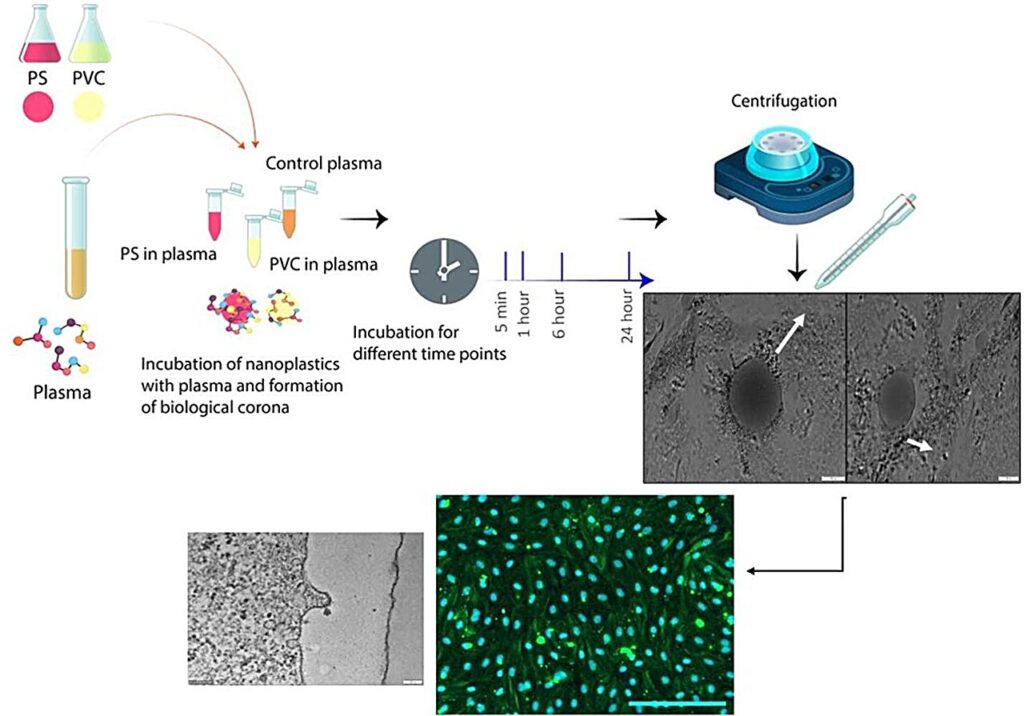A new study published in the journal Nano Today reveals that nanoplastics, which are tiny plastic particles less than 1 micrometer in size, may cross the blood-brain barrier (BBB).
The research marks a significant advancement in understanding how nanoplastics might transfer in human blood and interact with biological systems.
Led by Dr. Fazel A. Monikh from the University of Padua and Dr. Šárka Lehtonen from the University of Eastern Finland, the international team of scientists investigated how nanoplastics made from polystyrene (PS) and polyvinyl chloride (PVC) behave in human plasma and tested their ability to cross the BBB.
The researchers utilized a novel approach by embedding gadolinium, a rare earth metal, into the nanoplastics, allowing precise tracking and quantification of their movement and transformation within the human body.
The team found that upon exposure to human plasma, nanoplastics rapidly attract a variety of biomolecules, immediately forming a “biological corona” that affects their behavior and interactions with cells.
The study demonstrated that both PS and PVC nanoplastics could cross the BBB, with PVC particles showing a higher penetration rate. However, the presence of a biological corona significantly reduced the amount of nanoplastics entering the brain.
The human blood-brain barrier (BBB) consists of a tightly packed layer of endothelial cells, surrounded by astrocytes and pericytes that restricts the passage of a variety of molecules and substances from the blood to the brain.
According to the researchers, the penetration of nanoplastics through the BBB highlights the need for further research on their potential neurotoxicity and long-term effects on human health.
Dr. Lehtonen commented, “Our research provides crucial insights into the behavior of nanoplastics in human biological systems. Understanding how these particles cross the blood-brain barrier opens new avenues for developing preventive measures against their potential harm.”
The study represents a significant step forward in the field of nanotoxicology. The innovative methods and findings are expected to be instrumental in shaping future research and regulations regarding nanoplastic pollution and its impact on human health.


